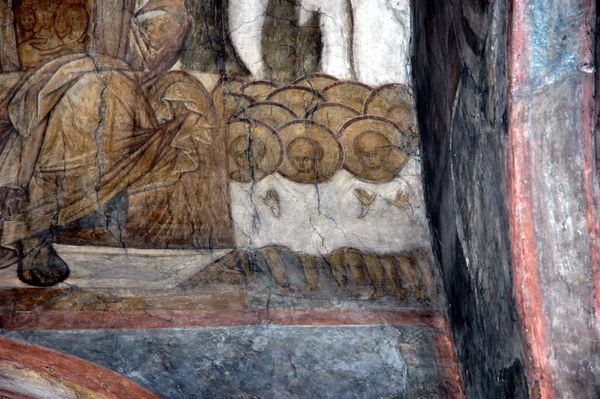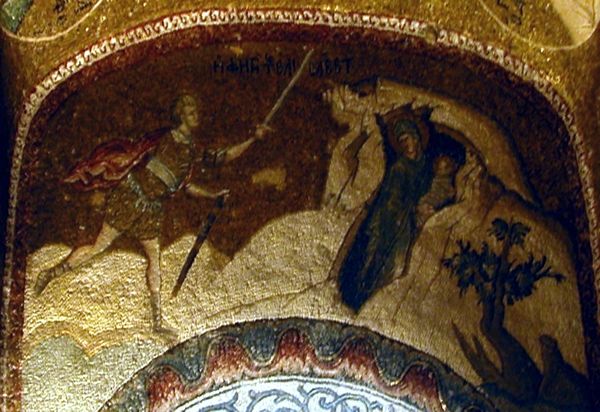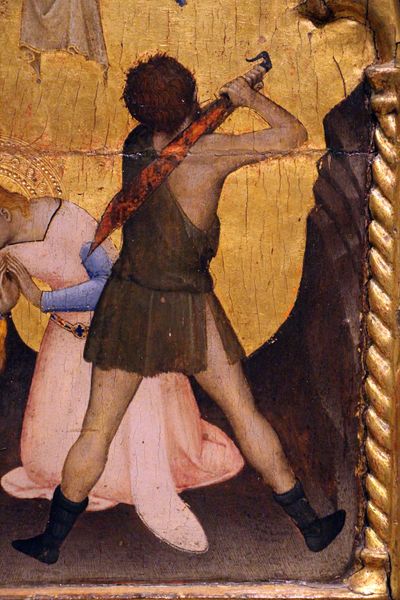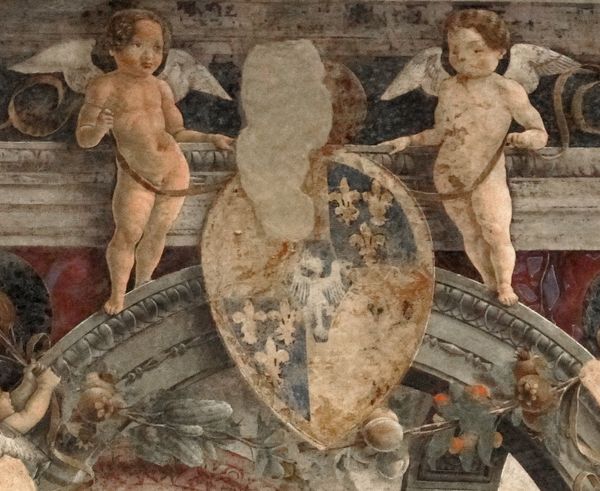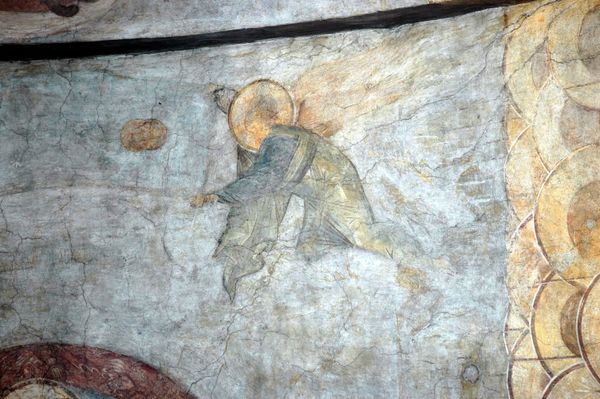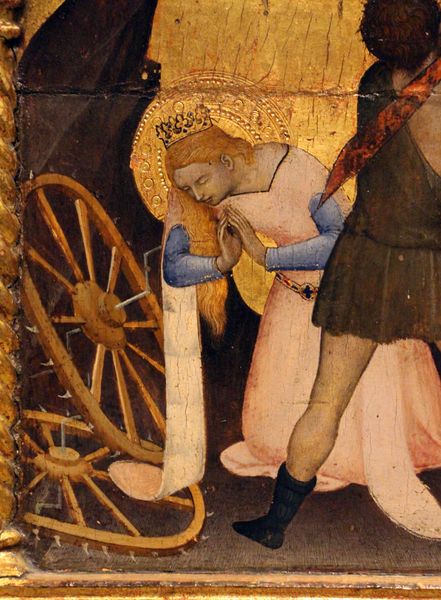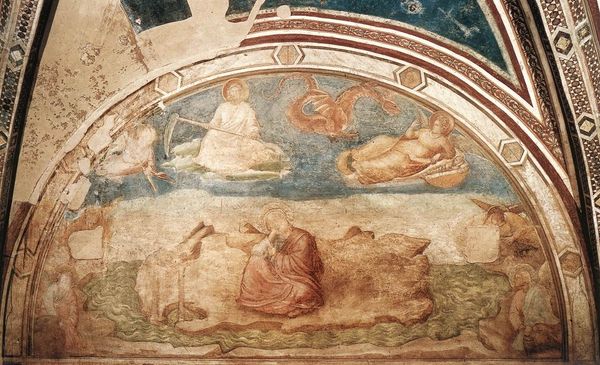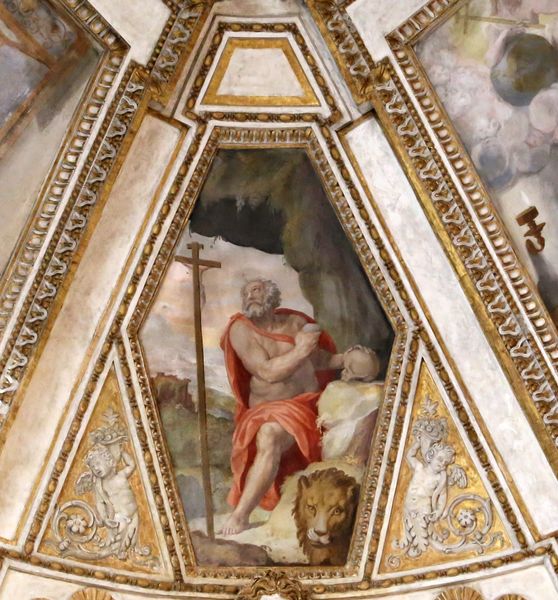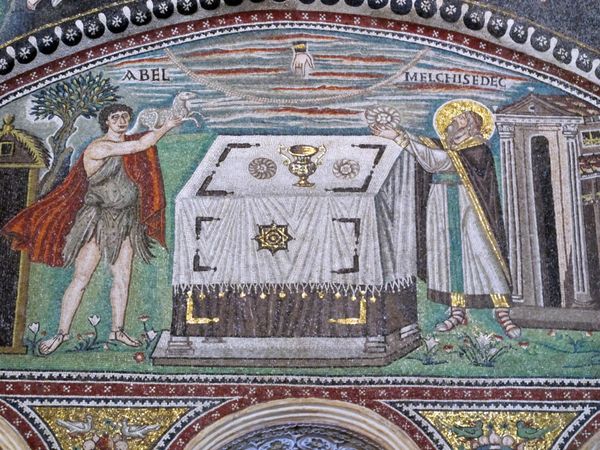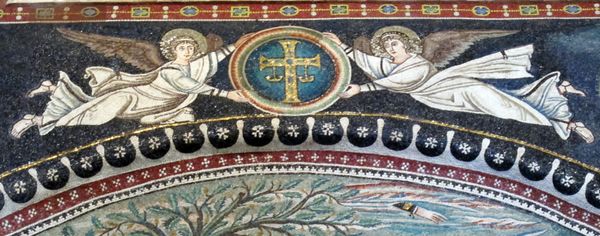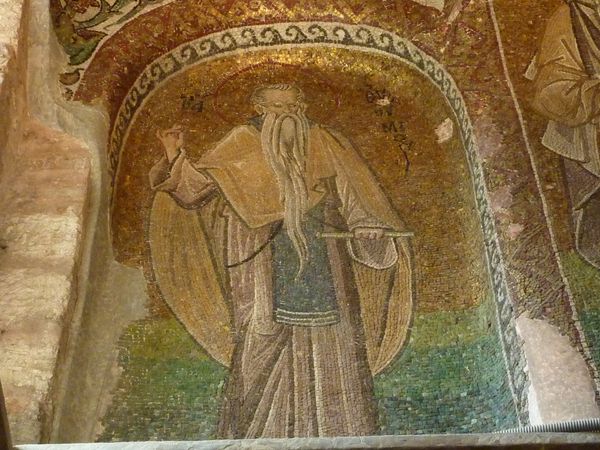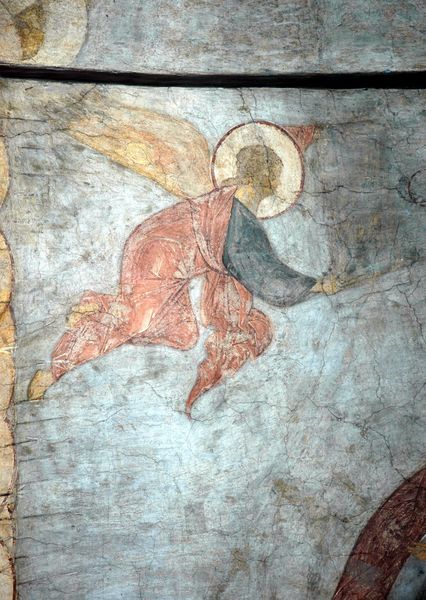
tempera, painting
#
tempera
#
painting
#
gothic
#
figuration
#
oil painting
#
history-painting
#
italian-renaissance
#
miniature
Copyright: Public domain
Curator: The angel, hovering over Saint Catherine, is striking. I'm immediately drawn to the gold leaf ground, with its fine craquelure – it speaks volumes about the painting's age and the materials used. Editor: We're looking at a detail from "Martirio di S. Caterina," painted around 1355 by Giovanni da Milano. It depicts the martyrdom of Saint Catherine of Alexandria. Curator: The use of tempera is so fascinating. The layering creates this delicate, almost ethereal quality. And look at the rendering of the angel's robes, the way they fall and drape... I wonder about the specific pigments sourced and the artisanal techniques involved in their application? Were they locally produced, or were more costly imports involved in this commission? Editor: That’s a fascinating line of inquiry, particularly considering the rise of Italian city-states and their commercial networks during that time. Paintings like these served a vital social function, of course. Religious institutions were major patrons, and martyrdoms provided a powerful narrative to reinforce faith and morality to the populace, and often functioned as a warning for disobedience. Curator: The gold certainly adds to the sense of divine spectacle. The use of precious materials elevates it beyond mere craft, suggesting that the gold becomes intrinsic, conceptually entwined with the martyrdom. But how much of that gleam served less heavenly needs? Religious displays have historically operated, in part, to impress upon observers a patron's power. Editor: Absolutely, the dazzling quality enhanced the Church’s authority. Notice, too, how this image presents an active theological and political discourse; it reinforces ideas about sainthood and sacrifice, projecting institutional power outwards while the style evokes a sort of nostalgia even at the time. What social behaviors were meant to follow from an image like this, placed perhaps over an altar or in a private chapel? Curator: It prompts reflection, definitely, on the construction of sanctity and power. But back to the material… the choice of tempera over, say, oil paint which was starting to appear, suggests a conscious decision about texture, light reflection, the desired longevity. What this painting reveals, more than any pious allegory, is the economic investment in labor, process and material display during this early Renaissance period. Editor: I agree. This little detail gives us an incredible glimpse into both the economics and aesthetics of faith. Curator: Exactly. A nexus where commerce, craft, and canon collide.
Comments
No comments
Be the first to comment and join the conversation on the ultimate creative platform.
